The Battle of Luxury Daily Beaters Part 3 – Omega Seamaster Aqua Terra VS. Rolex Datejust, The Verdict!
Two of the leading luxury all-rounders face-to-face!
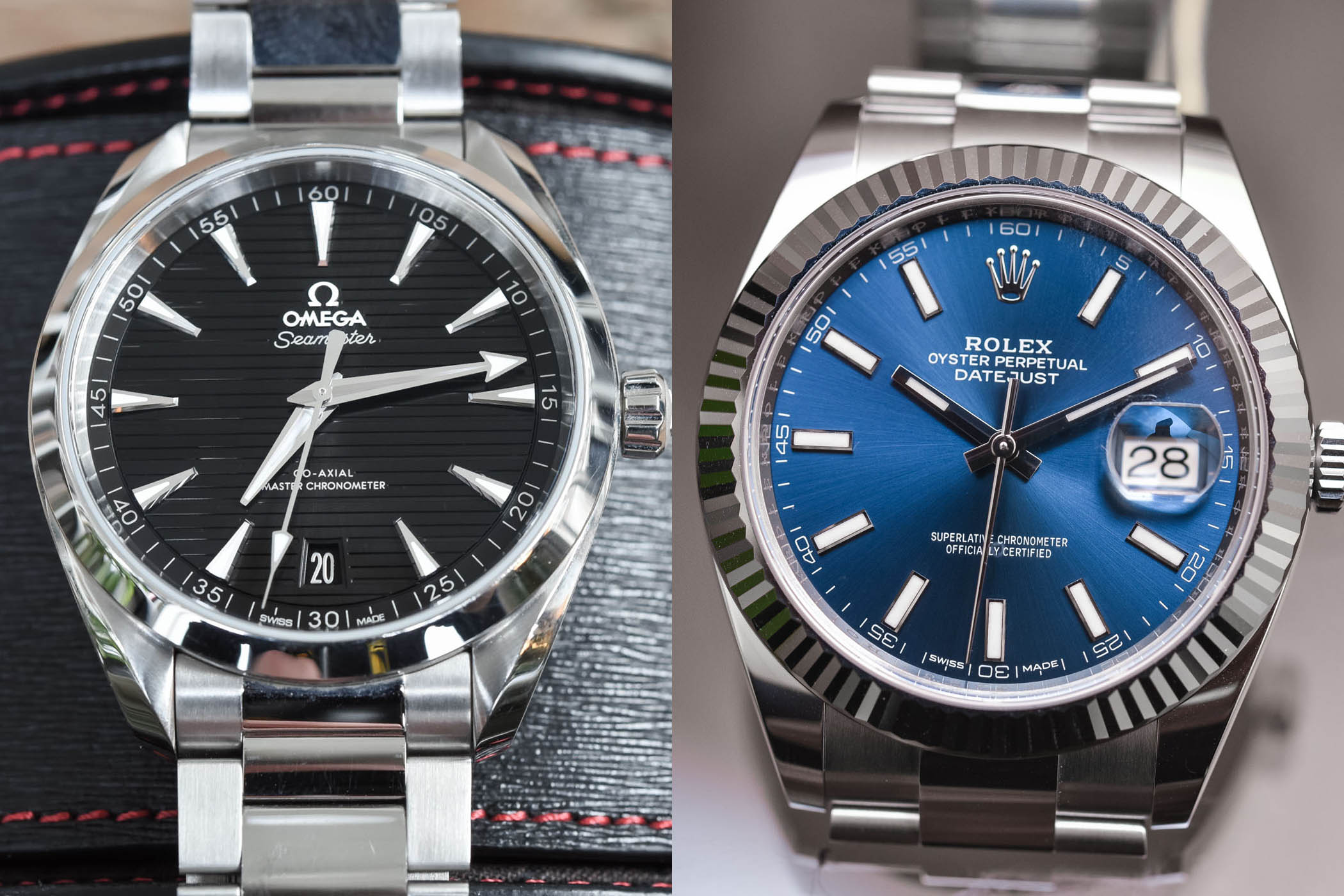
In the grand scheme of things, watch collectors are a rare species and, however much we love you, do not represent the vast majority of men when it comes to watch needs. Most men tend to fall in the one-watch category. When it comes to investing in an all-rounder destined to last a lifetime (and some), there are two candidates you cannot overlook. Extremely specialised tool watches for specific sports won’t look right in the office, and that ultra-thin gold tuxedo watch will look pretty ridiculous during rugby practice. It’s all about striking a balance, finding a watch that works in all environments and that won’t let you down. For this Battle of the Luxury Daily Beaters we will be pitting two strong contenders. The three-hand-and-date Omega Seamaster Aqua Terra 150m and the Rolex Datejust 41 are, in our eyes, versatility incarnate and offer a very satisfying answer to the “one watch for all occasions” conundrum. Squarely matched in almost every aspect, let’s take a closer look at their vital statistics and see if we can pronounce a winner.
Editor’s Note: The photographs of the Omega Aqua Terra were taken on Frank’s 18cm wrist and the Rolex Datejust on Brice’s 16.5cm wrist. So please take this into consideration when looking at the images illustrating this article.
Case Size and Presence on the wrist
Both models have a contemporary 41mm diameter and both have stainless steel cases and metal bracelets. The cases of both the Aqua Terra and the Datejust are exceptionally well-finished with brushed and polished surfaces and the bracelets are fully integrated into the case.
There are, however, noticeable differences regarding the height of the case; the Aqua Terra has a case thickness of 13.6mm while the Datejust is 11.8mm. That might not seem like a lot on paper, but when viewed in profile, you can really appreciate the difference. The 2017 Datejust we have for this comparison benefits from the recent design upgrade and has a slightly slimmer case, more tapered lugs and a thinner bezel. The profile of the Datejust is leaner, more ergonomic, decidedly more elegant than in the past and sits beautifully on the wrist.
Despite the difference in case height, both watches sit extremely well on most wrist sizes (Aqua Terra on an 18cm wrist, Datejust on a 16.5cm). The tapered lugs of the Aqua Terra and the mobile end links of the bracelet allow the watch to sit flush against the wrist.
Another salient difference is the white gold fluted bezel of the Datejust in contrast to the flat polished steel bezel of the Aqua Terra. Curiously, the fluted bezel draws the eye in towards the centre of the dial making the watch seem more compact and smaller than its 41mm would indicate.
The water-resistance of the Aqua Terra is 150m, and while the crown is screwed-down, the caseback has a sapphire crystal to view the movement. The water-resistance of the Datejust is 100m and the solid caseback and crown are screwed-down.
Conclusion: Although both watches share the same 41mm diameter, the case thickness of the Datejust is noticeably slimmer. The case finishes are similar but the gold fluted bezel of the Datejust makes the watch seem slightly smaller and more compact than the Aqua Terra. Water-resistance is 50m higher in the Aqua Terra and to boot, the caseback offers a view of the movement. All of this gives a slightly more refined profile to the Rolex, while the Omega feels a bit more casual.
Dial Legibility
The black dial of the Aqua Terra is decorated with the characteristic teak decking of this collection. The irregular decking adds interest and depth to the dial and this black model, in particular, comes across as more elegant, classic and formal than some of its more colourful counterparts.
The date window at 6 o’clock picks up design cues from the vintage 1952 Seamaster Calendar that inspired certain details of this watch. The background colour of the date window matches the black dial and the function blends in discreetly with the dial. Applied triangular indices with Super-LumiNova and classic Broad Arrow hands with luminescent tips complete the picture. However, when the brightly polished rhodium-plated hands converged on the dial, they were hard to distinguish.
The blue dial of the Datejust offers exceptional legibility at all times. The rectangular gold hour markers and the blunt-edged baton hands are treated with Rolex’s own luminescent material and emit a long-lasting blue glow. The date window at 3 o’clock, the function that the Datejust put on the map of horology, has a Cyclops magnifying lens.
Conclusion: Although the dials share comparable features, legibility is superior on the Rolex Datejust. The black decking of the Omega Aqua Terra makes this model come across as a slightly dressier, more formal model. Both watches feature date windows, the Aqua Terra’s tucked away at 6 o’clock, the Submariner in a prominent position at 3 o’clock with a Cyclops lens.
Latest generation in-house automatic Movements
Once again, both contenders benefit from the latest technology of their respective companies and their automatic movements perform well beyond the mandates of COSC-chronometer certification. The Omega Aqua Terra and the Rolex Datejust also come with a 5-year warranty.
The Omega Aqua Terra 150m is fitted with calibre 8900 with Co-Axial escapement and independent METAS certification as a Master Chronometer (surpasses COSC-chronometry certification with its powerful resistance to magnetic fields of 15,000 gauss). Two mainspring barrels provide a 60-hour power reserve and stable distribution of torque. In addition to time and date functions, the movement has a stop-seconds and a time-zone function that lets you set the hour hand independently while travelling across time zones. The machine-finished decoration includes bevelled edges and Geneva waves on the rotor and bridges.
The Rolex Datejust is equipped with the new generation Rolex calibre 3235, a movement designed to offer improved precision, shock and magnetic field resistance, and an upgraded power reserve of 70 hours. Covered by 14 patents, calibre 3235 uses Chronergy escapement, paramagnetic alloys and in-house high-performance lubricants. The movement has earned ‘Superlative Chronometer’ status, an in-house certification devised by Rolex that surpasses precision rates of the COSC two-fold.
Conclusion: Solid in-house movements in both cases with anti-magnetic properties and precision rates that surpass COSC-chronometry standards. Omega’s Calibre 8900 has a higher resistance to magnetism, offers the additional time-zone functionality and can be viewed from the caseback. Rolex’s Calibre 3235 boasts a precision rate of -2/+2 sec/day after casing, also includes stop-seconds functionality and has 10 hours more power reserve than the Omega but is hidden under the solid caseback.
Bracelets
One of the star attractions of the latest Datejust models was the reintroduction of the 5-link Jubilee bracelet. This Datejust 41mm model is available with the dressier super-supple Jubilee or the sportier 3-link Oyster bracelet we have here today. The finish of the bracelet is absolutely first class with smooth, rounded edges and contrasting satin-brushed outer links and thicker brightly polished central links. Fully integrated into the case, the bracelet has an ergonomic design that adapts perfectly to the wrist. Another feature of the Oyster bracelet is the folding Oysterclasp and the Easylink DIY 5mm comfort extension link.
The Aqua Terra also comes with a variety of strap options, ranging from the bracelet we have here to rubber, leather and forty plus NATO straps. No doubt inspired by the hyper-comfortable and resilient Oyster bracelet, the 3-link bracelet of the Aqua Terra is also very well-finished with polished central links, brushed outer links and has mobile end links that allow the watch to settle nicely on the wrist.
Conclusion: Two comfortable steel bracelets, one undeniable precursor. An advantage of the Oyster bracelet over the Aqua Terra is the DIY Easylink rapid comfort extension link that needs no tools to adjust.
Price and availability
The Omega Aqua Terra 150m steel on steel model – ref. 220.10.41.21.01.001 – retails for EUR 5,400 and is widely available. The retail price of the Rolex Datejust 41 – ref. 126334 – is EUR 8,650. Take into consideration that a Datejust 41 with flat steel bezel and an Osyter bracelet will retail for EUR 6,750.
When I visited a Rolex retailer here in Madrid, I was told there was a waiting list of approximately 9 months for the white metal version. There were, however, plenty of pink and yellow gold Rolesor models on offer.
Conclusion: Two very strong, equally matched contenders with a price difference of roughly EUR 3,250 for the configurations we have here, and EUR 1,350 without the fluted bezel. If brand equity is important to you in your final choice, the price difference will not be an issue. If brand equity is not a primary concern, and you like the aesthetics of the Aqua Terra, you are getting a lot of watch for a fair, equitable price.
Verdict
This is a tough one. As you can see from the comparisons above, both contenders are rock-solid candidates in this Battle of the Daily Beater, and both are well-matched on practically every level give or take some minor differences. Quality is equal, mechanics are outstanding, performance surpasses COSC standards, finishes are exceptional, both have a 5-year warranty – but the look is different.
(Editor’s note: keep in mind that the verdict here is based on Rebecca’s personal preferences.)
And when the battle boils down to looks, objectivity gets tossed out the window. Although the rational side of me wants to embrace the Aqua Terra and acknowledges that it is one of the fairest prices for a watch of these characteristics, the emotional part of me wants the Datejust 41.
The Datejust is, in my eyes, the incarnation of the perfect daily watch. Legibility is flawless in any light conditions, the dial is simple and unpretentious, and if you are going to have a date window (and were the inventor of this cool feature), why not flaunt it? I know there are thousands of reasons why people hate date windows, but I believe that if you’re going to have this functionality it should be conspicuous and you should be able to read it without having to reach for your glasses! Although I was a little uncomfortable at first about the fluted bezel, the more I looked, the more I loved the way it played with the light.
Powerful, sporty, resilient, functional and so good-looking… I’m in love with the Datejust.
Which is your favourite? And why? We’d love to hear from you so please feel free to post your comments in the box below.

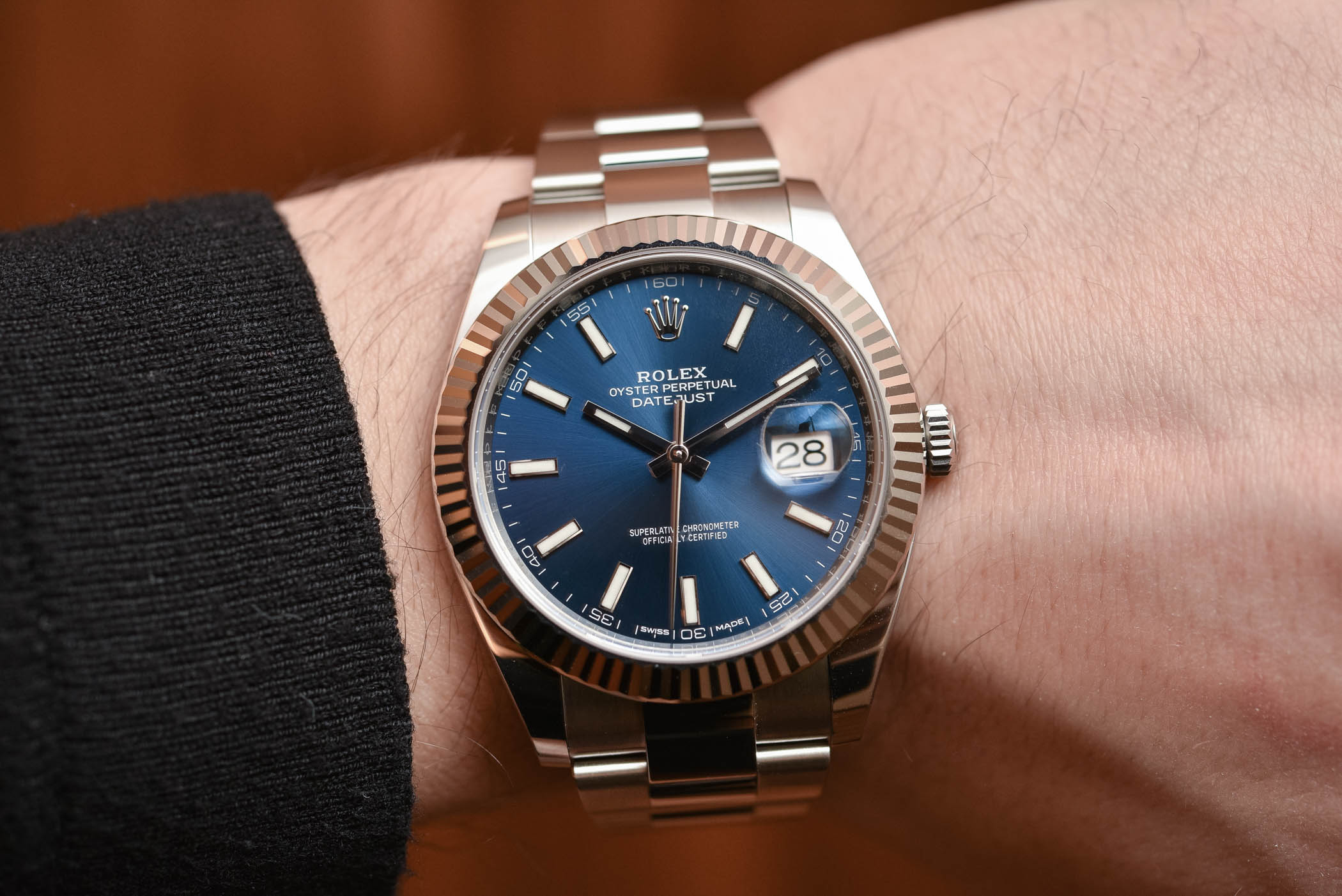
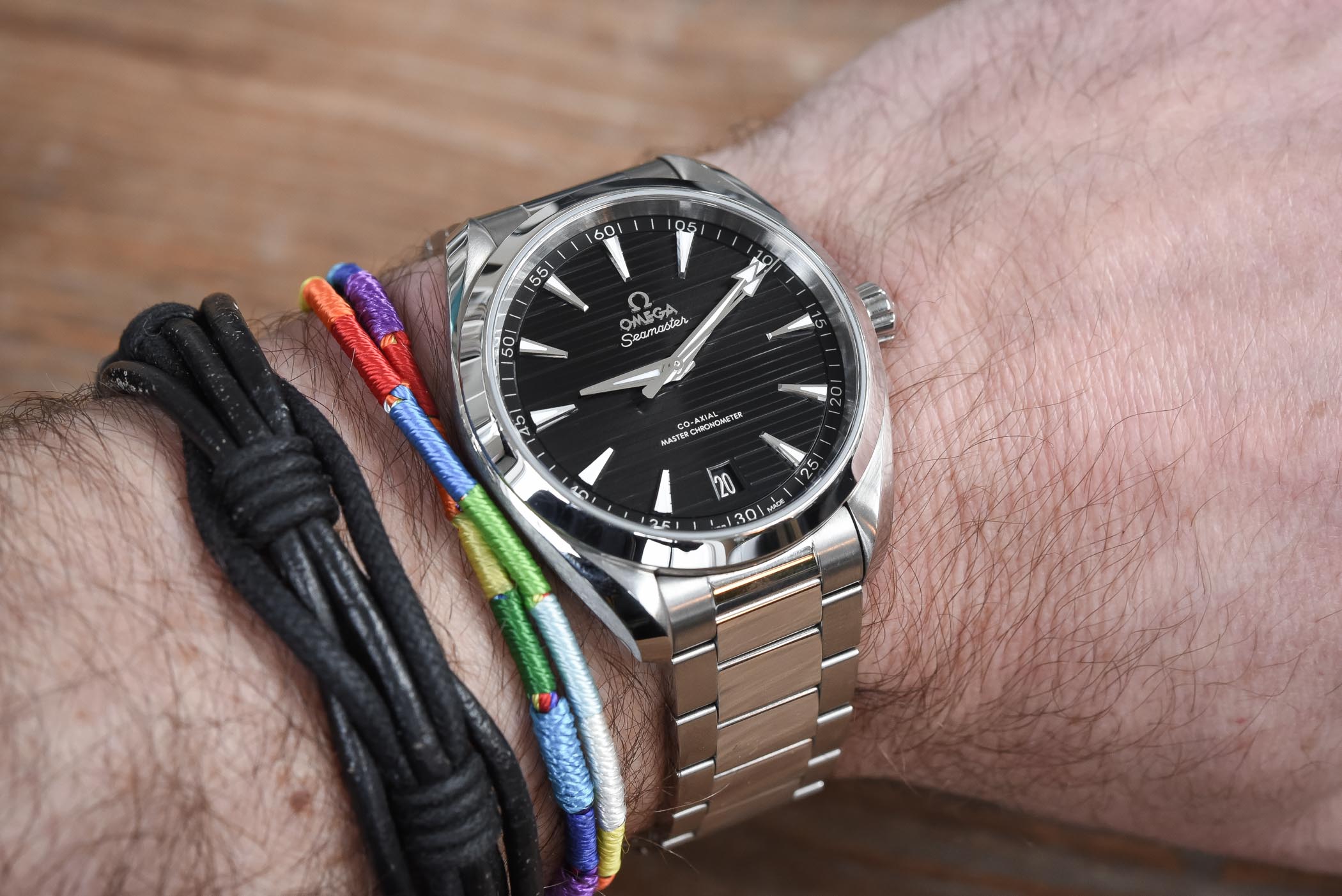
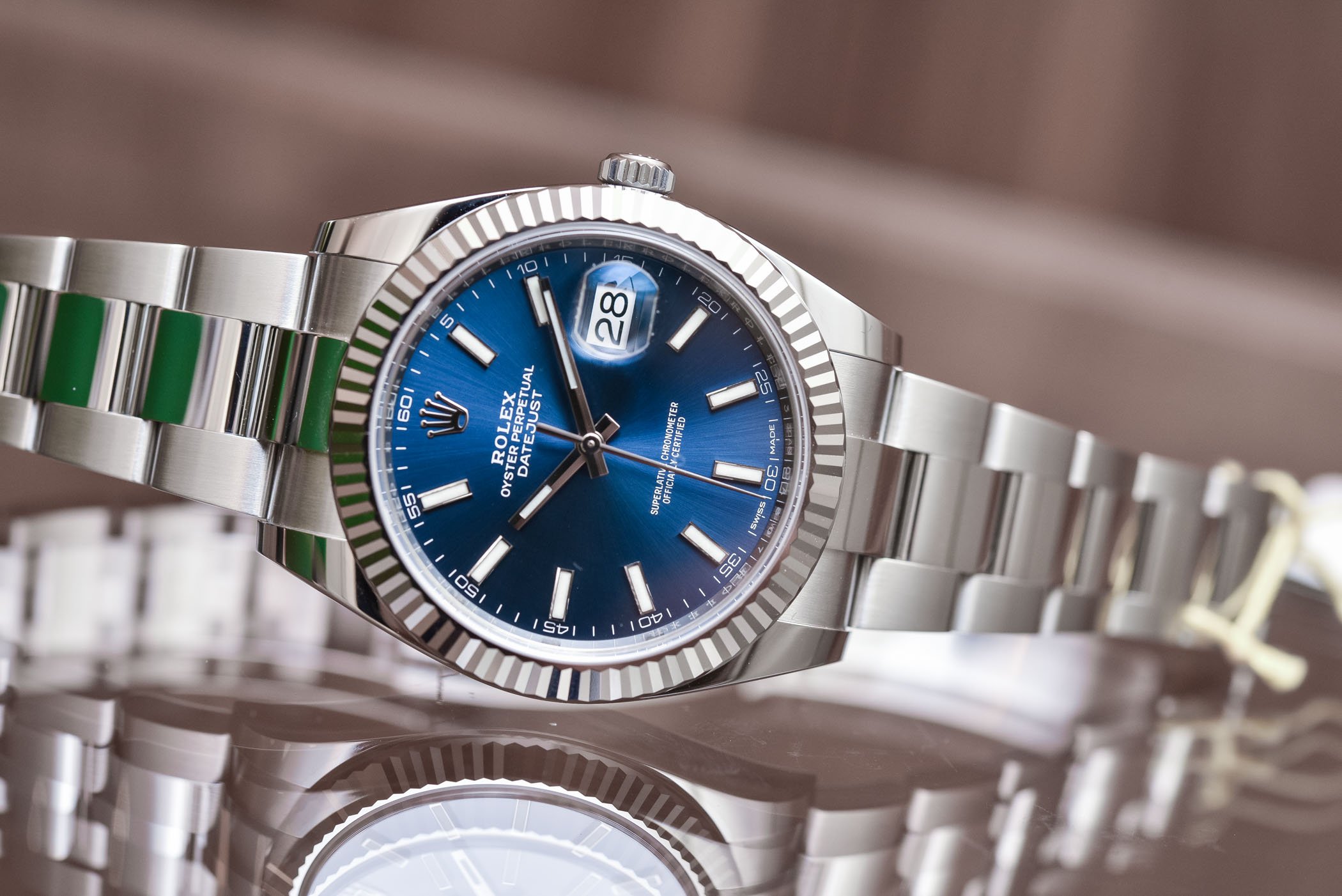
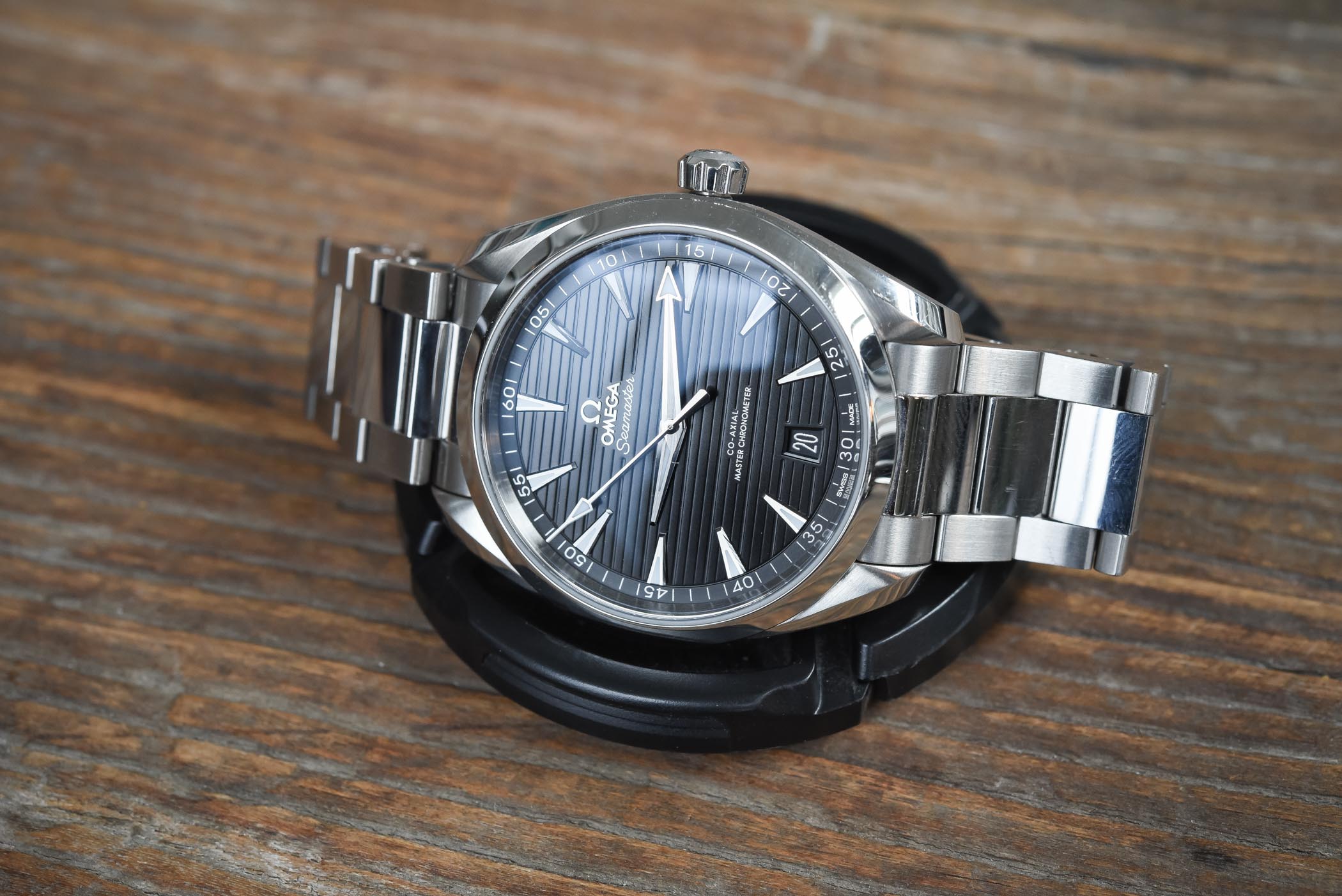
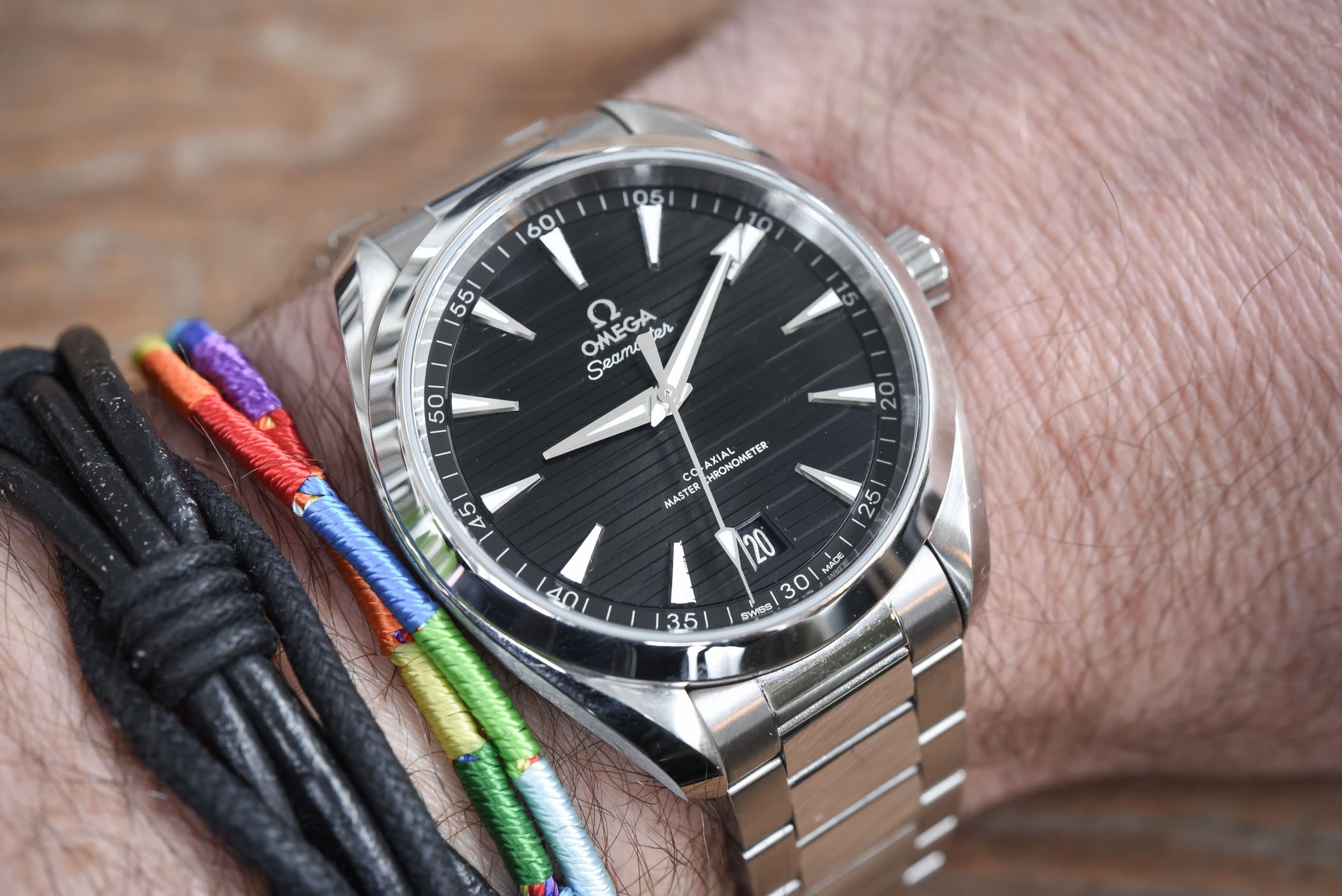
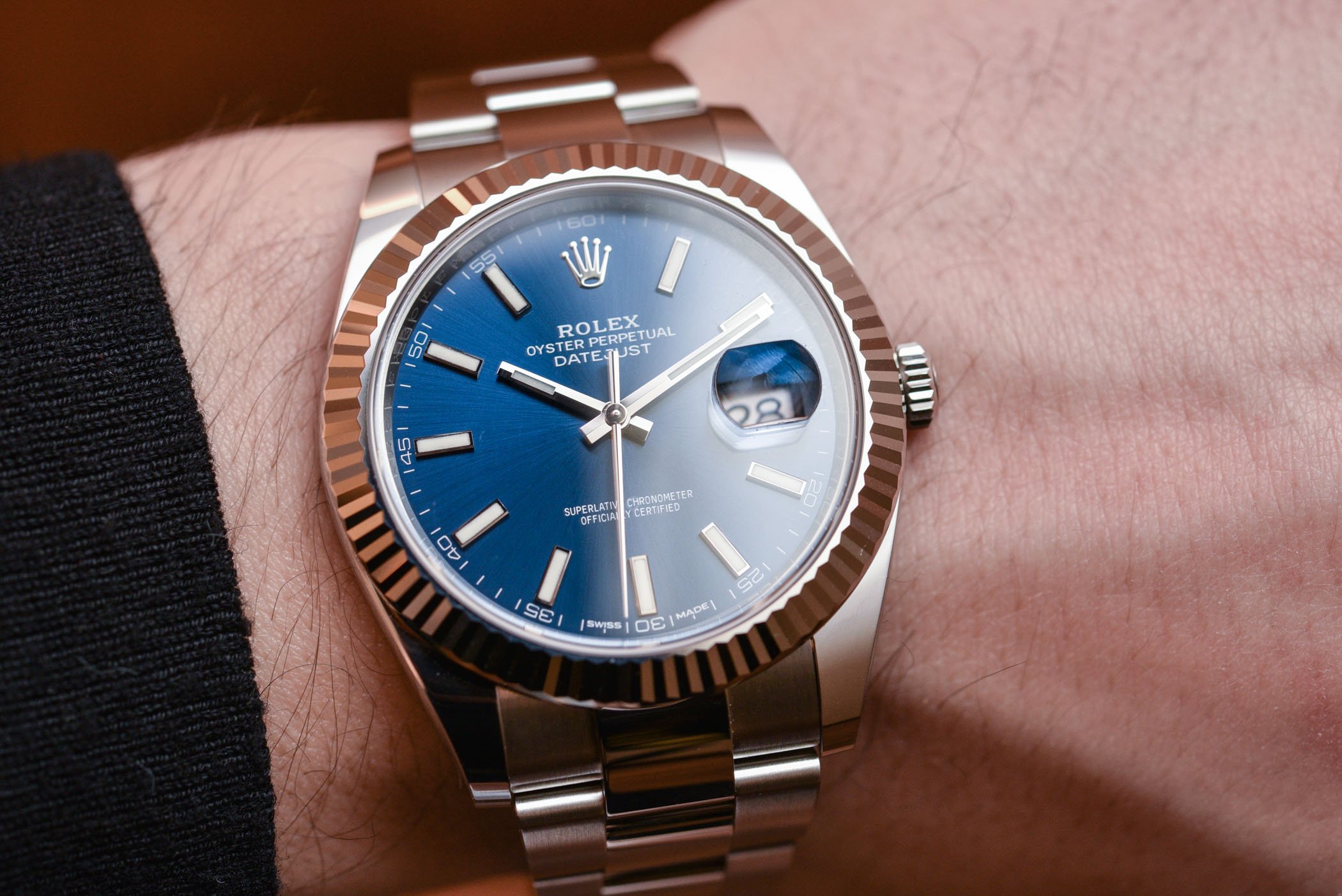
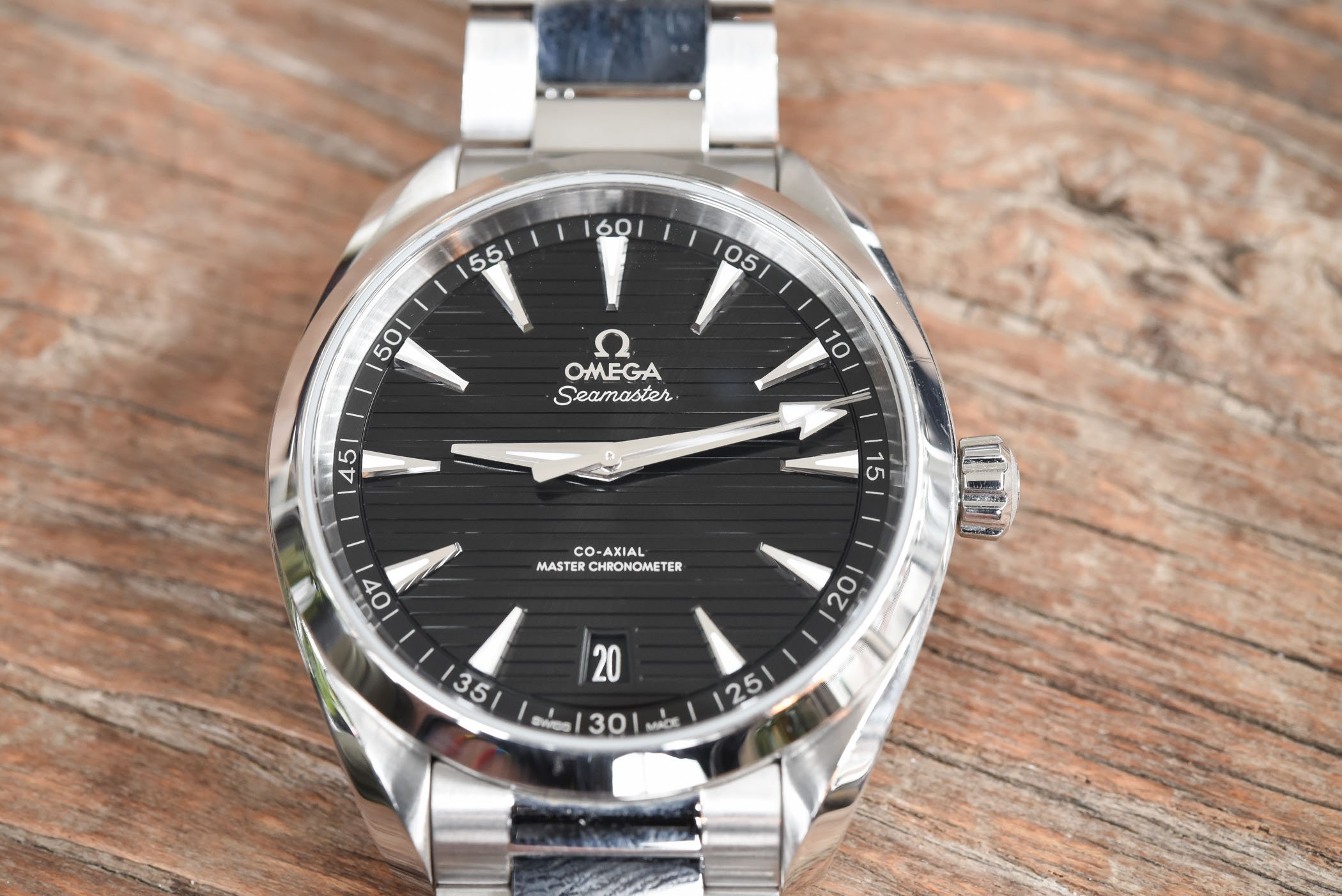
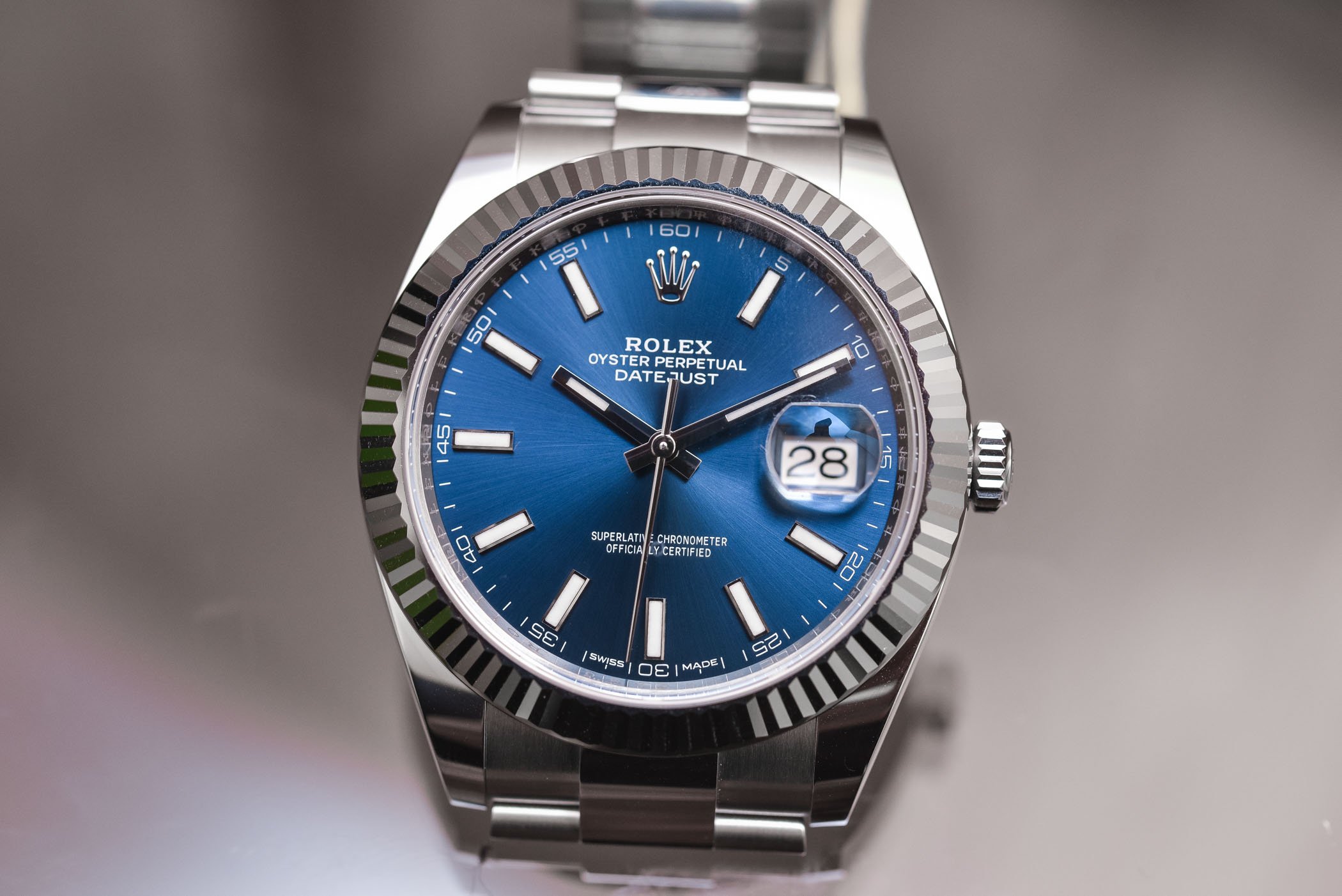
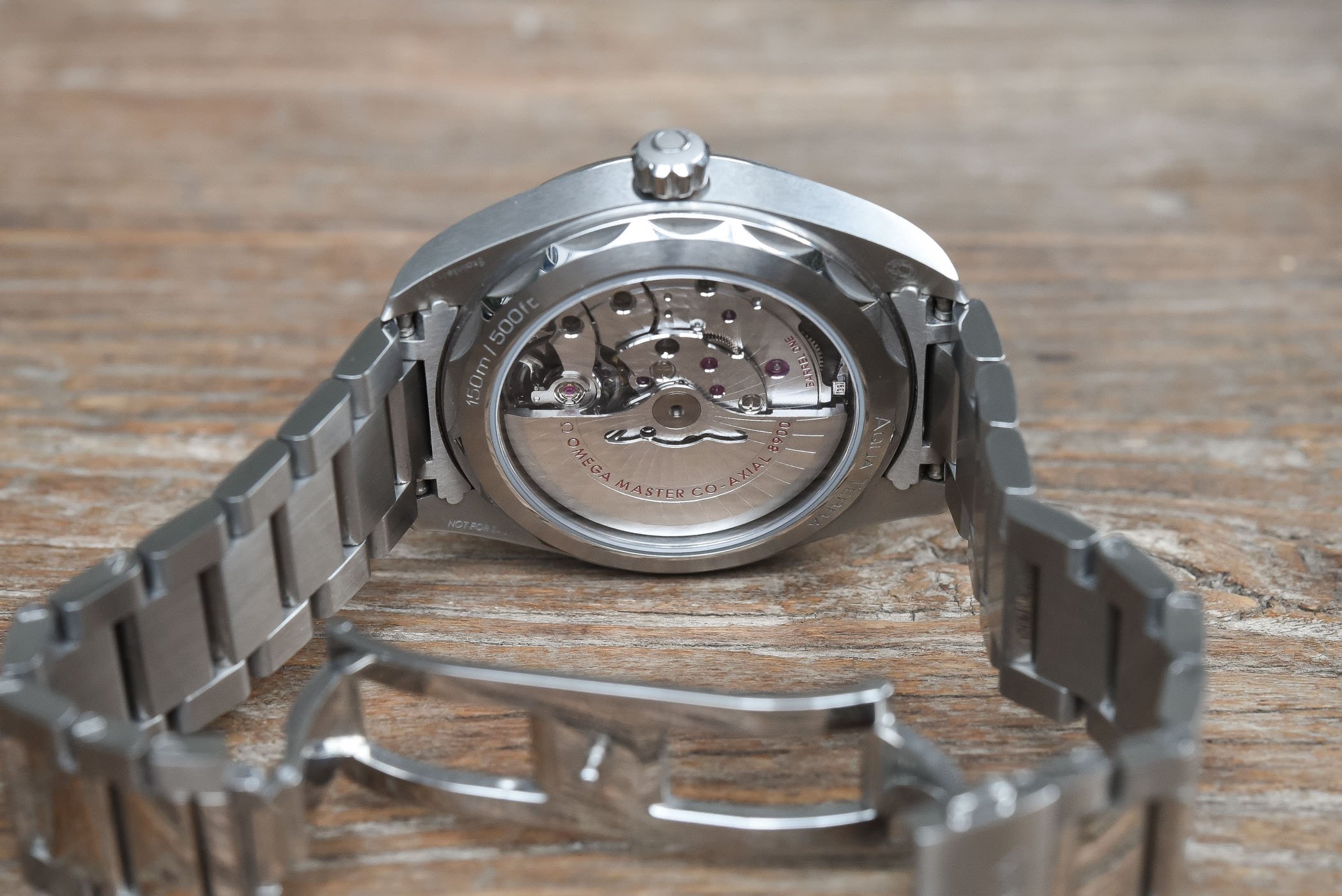
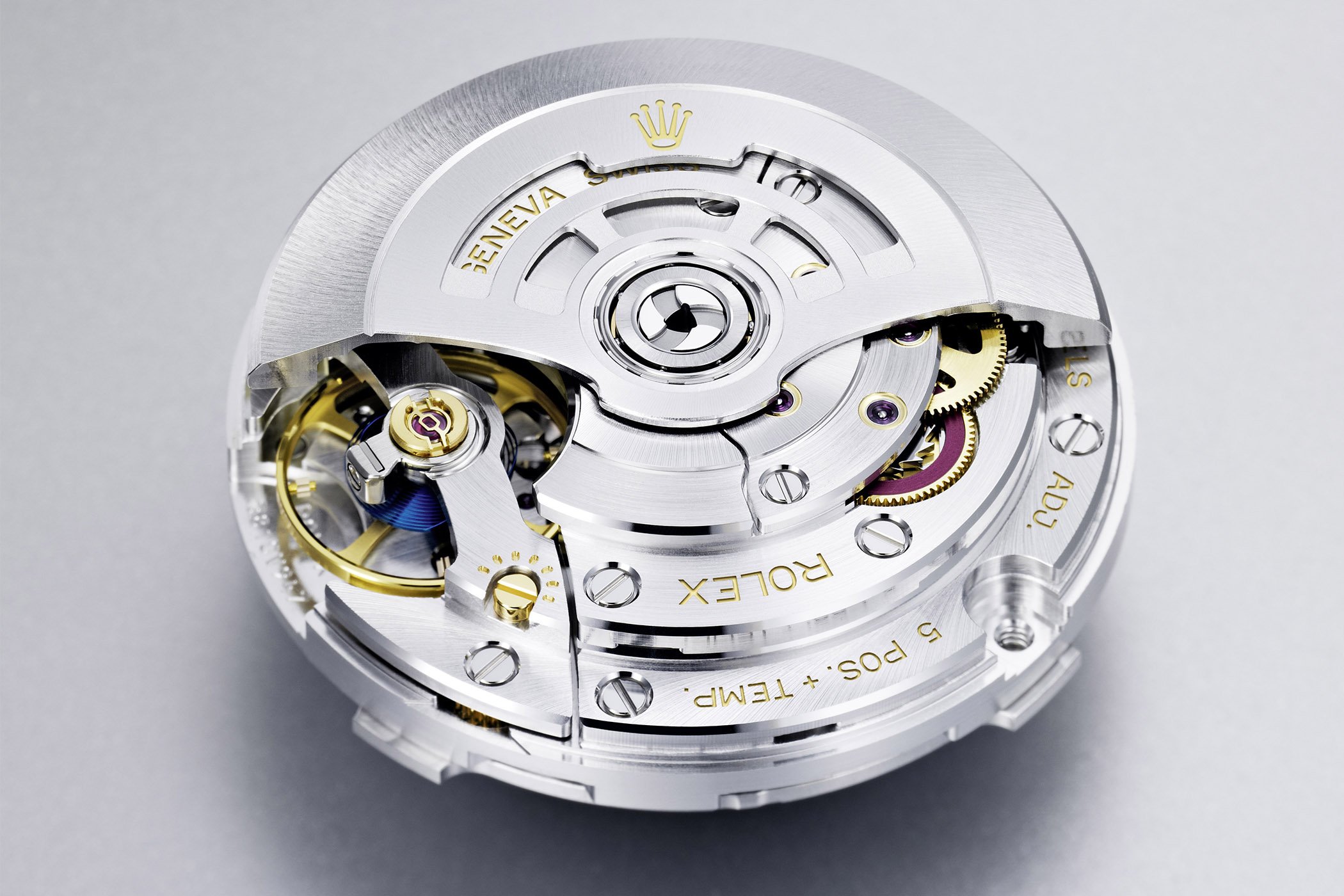

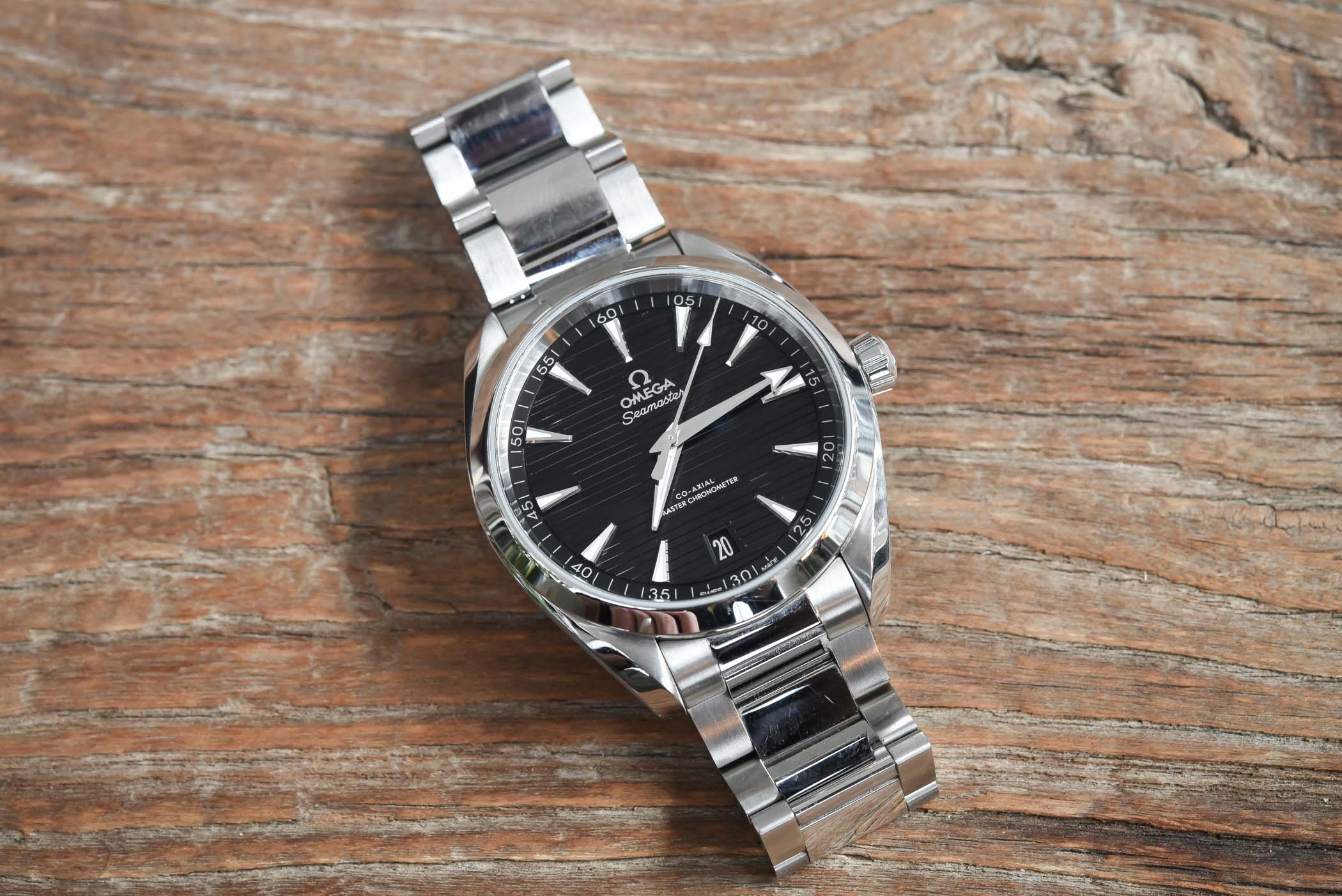
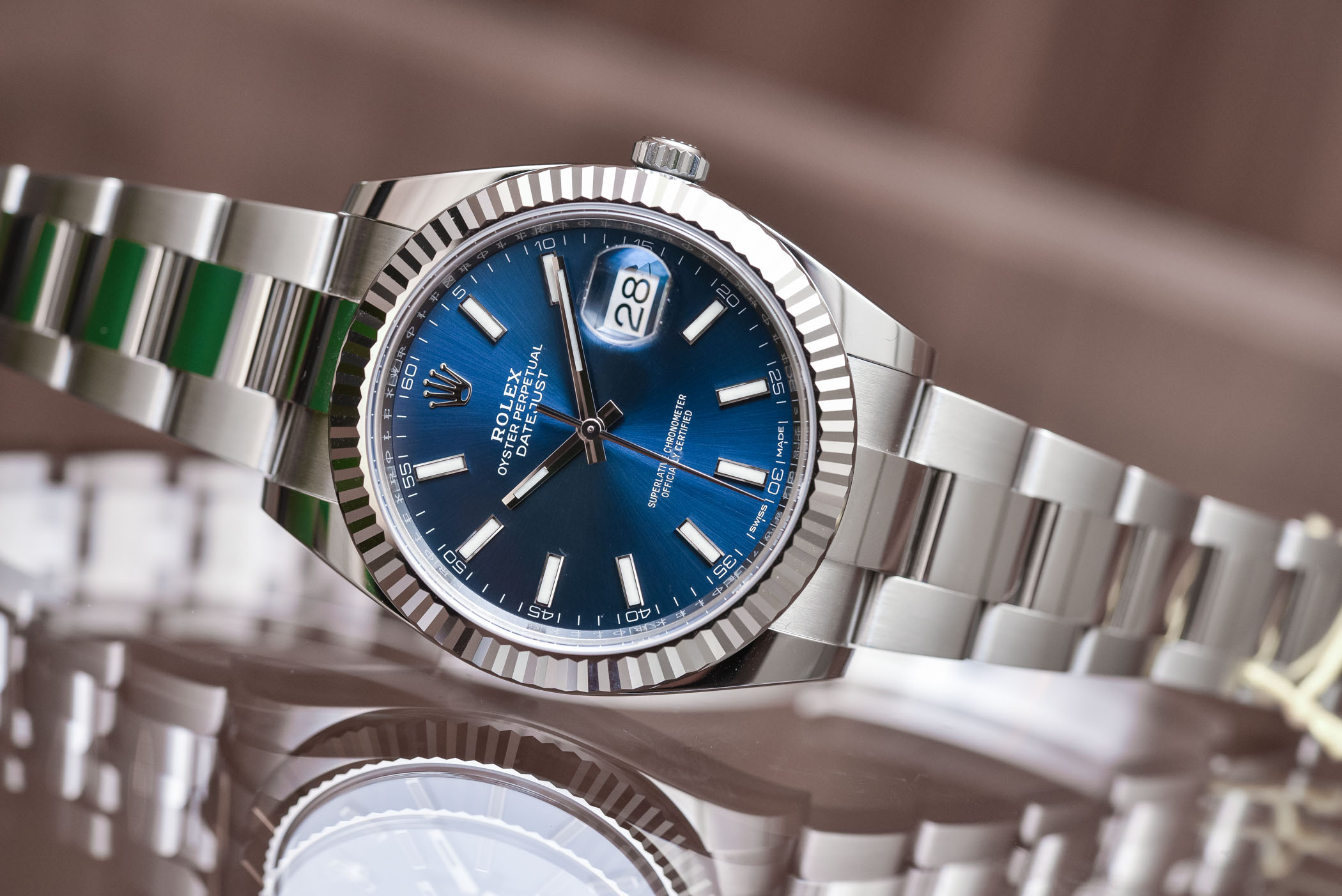
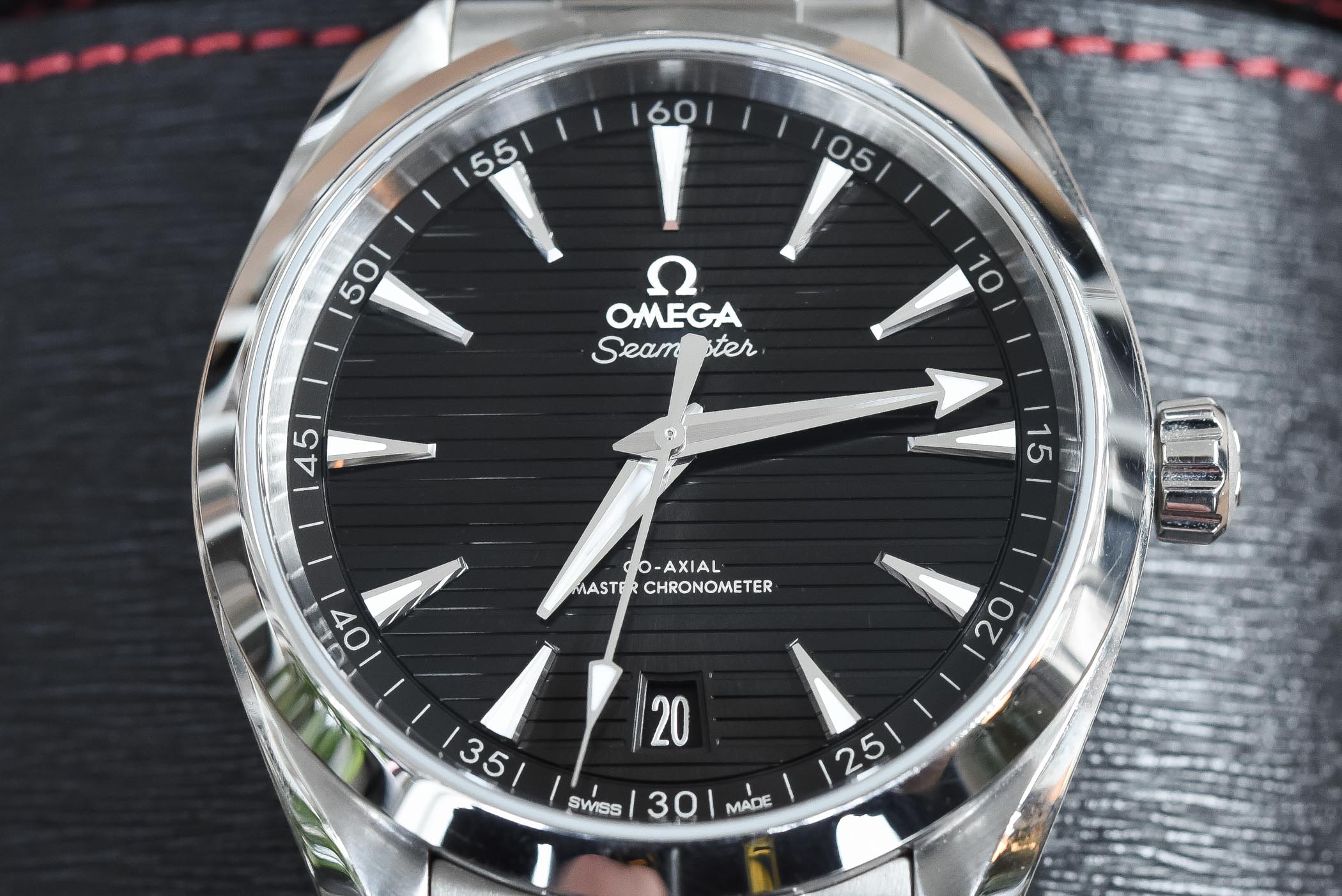
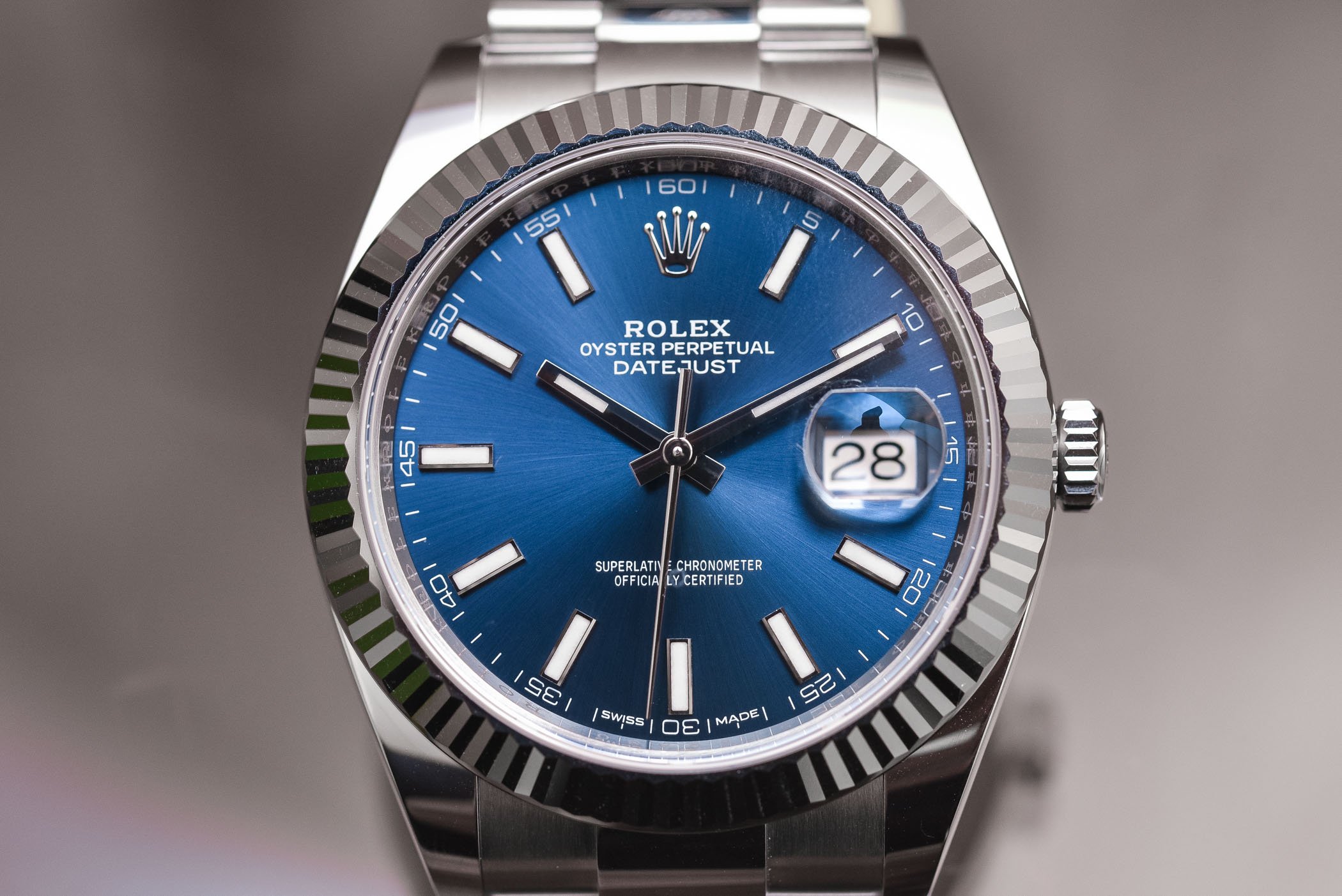
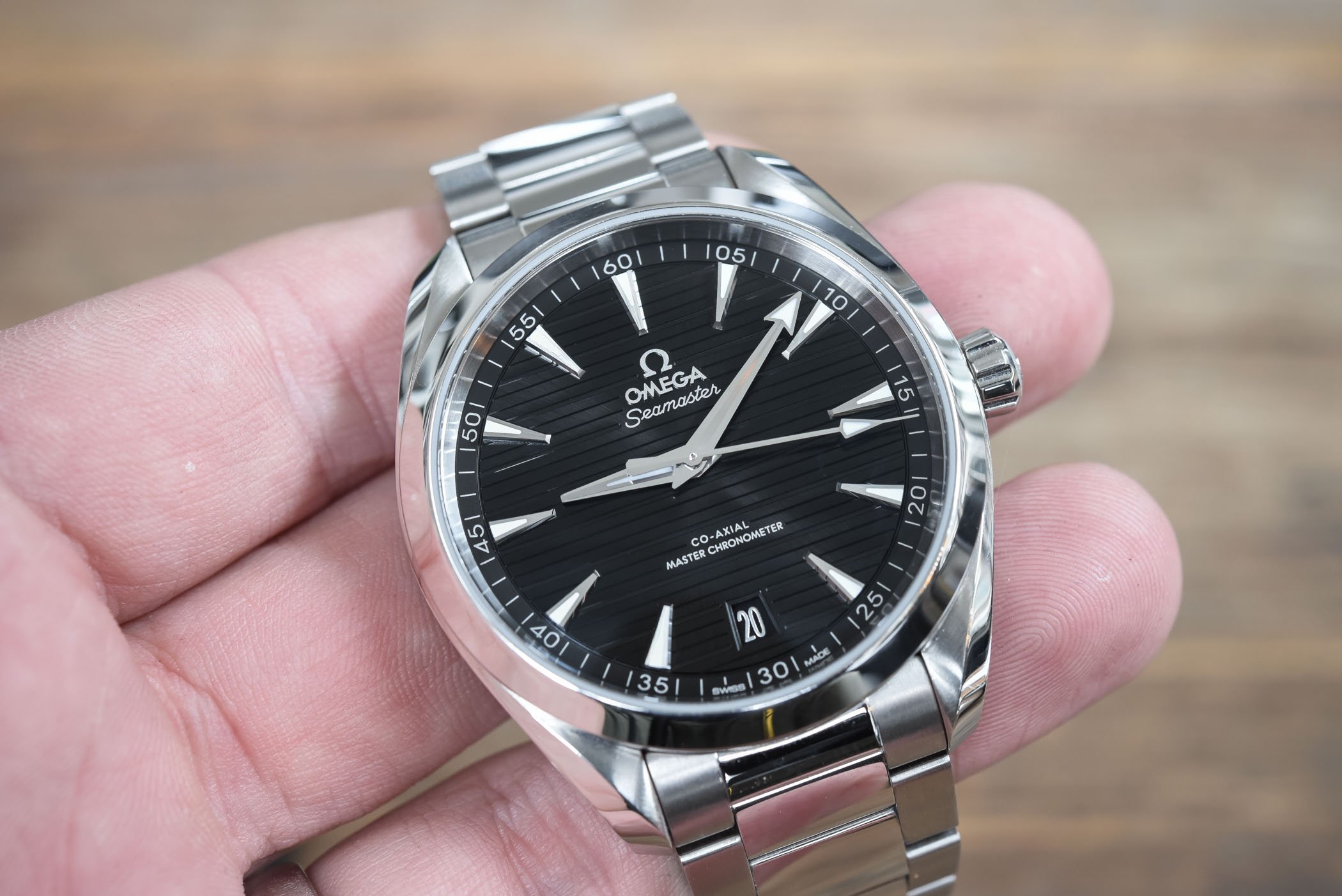
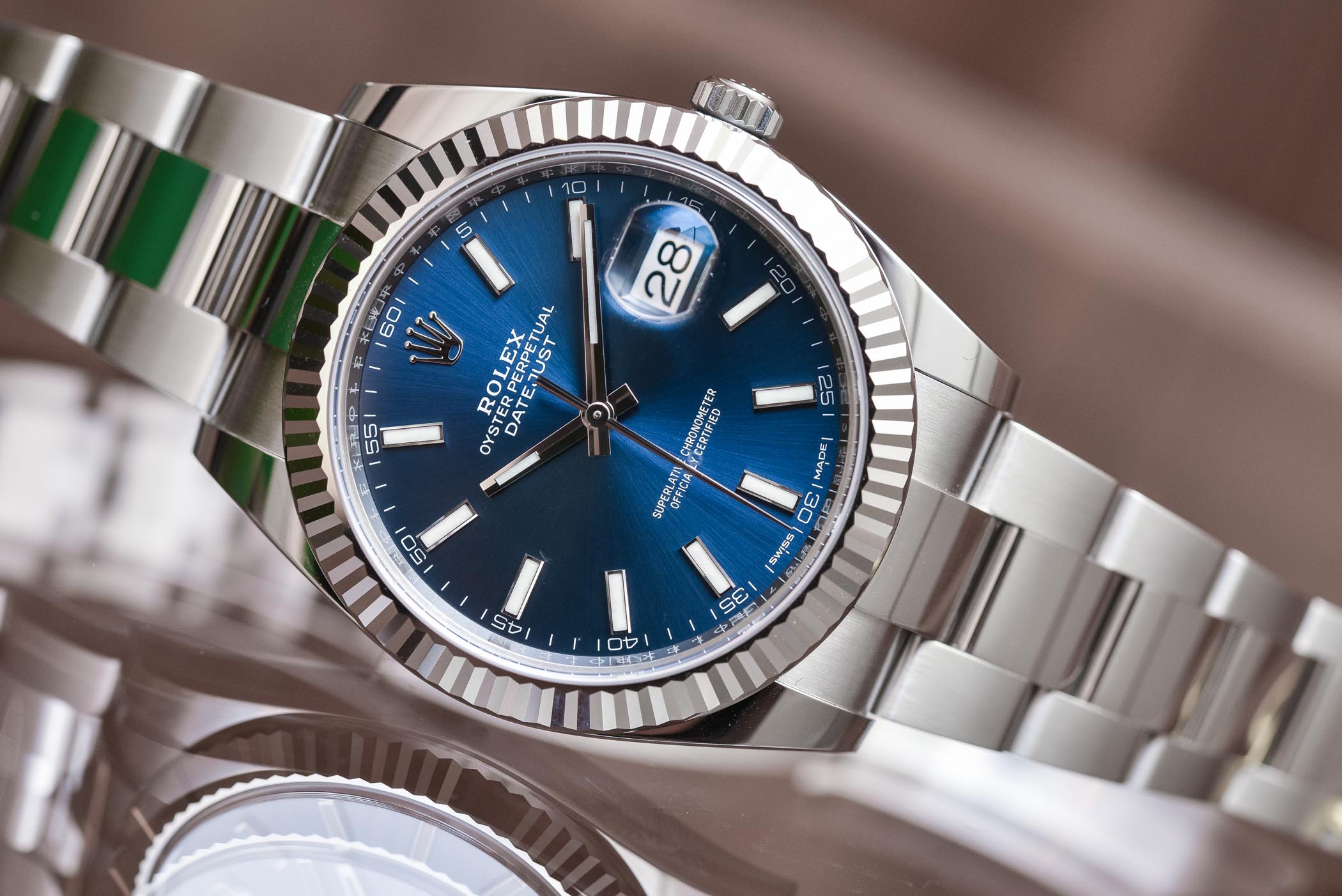



30 responses
OK, whatever. Now add a Grand Seiko Spring Drive to the contest to blow both these everybodies’ watches out of the water. A Datejust is a no go. You could also wear a sign on your head “unimaginative and uncreative person”. It is not fair to Rolex as the watches are not bad, but it the price for selling out.
Good comparison, and you can’t go wrong with either model – both lovely in different ways.
I’ve got a DJ41 with the smooth bezel and oyster bracelet, and one negative I’d add is that the polished areas of the watch (particularly the bezel) seem to scratch too easily compared to other makes I’ve owned. If you’re considering this watch, you might want to get the fluted bezel like in this review, as scratches on it will be much less noticeable.
How did Rolex sell out? By being enormously popular? Ironically, watch buyers are now (understandably) angry because of the shortage of the stainless sport models that used to be so widely available. Seems Rolex can’t win either way in the eyes of some watch buyers. I was anit-Rolex for the longest time for the reason you stated, unimaginative and uncreative decision, but I’m time I’ve come to believe that they make a great product and if you like it, to hell with what others may think.
May not be in production any more, but my daily, with comparable specs, finish and brand reputation is the Zenith El Primero Espada (with black dial in my case).
I own this Omega, but as the day-date model. I acknowledge that Rolex makes great timepieces (I own a blue Tudor Pelagos), but I feel their watches are very dated looking. There is something about the fluted bezel that reminds me of an old man’s watch. In fact, I have never seen a Datejust on a younger man’s wrist. No matter how much I try to like these watches, I just can’t get past the dated look.
You are correct Martin, the classic Grand Seiko “sports” model is better made than both and costs less. It is also more classically-proportioned and more legible. With one glaring omission: the GS bracelet have zero micro-adjustment and is less well-made than either of these two. IF the Omega also has zero micro-adjustment, it is out too in my opinion, regardless of personal taste.
I suspect there are few regular readers of this site who have learned anything from these articles. They will have their own view and alternatives. Hopefully somebody trawling the internet will, but I strongly suspect that to the average person, brand identity and price will be far more important than any technical aspect of either of these watches. Educated enthusiasts know that Rolex is not the be-all-and-end-all of horology. They buy a Rolex because of the timeless quality of the design, often I believe, DESPITE the hype and marketing and price-gouging. Or they buy an Omega because they know they are getting a watch of equal quality without the un-necessary premium or possible unfavourable perception they might create from wearing a Rolex.
Luckily, there are many many alternatives which serve this purpose equally as well.
And let’s be honest, very few people actually care what watch you’re wearing.
I sold my Rolex and bought a Grand Seiko and that is what you should have included here.
Sorry, but I now know from my experience with wearing one on my wrist that Rolex is somewhat overrated for the money. It would be OK if it was about 2000 dollars cheaper without the Swiss Brand tax.
And Rolex has black holes where lume should be, because of the date at three o’clock and the crown at twelve.I hate that.. If you are going to use lume use it for every hour marker not just some of them. Air King is even worse, so is the OP. Also the Rolex polished steel scratches really easily considering they make such a fuss of how special it is.Even some of my much cheaper steel cased watches are more durable and scratch resistant. I think Rolex could do better. Only good point is that they have finally increased the power reserve.
If you are buying the Datejust you are getting it for brand name recognition or as an investment.
I’d go for a GS (SBGA375 for example) over both, but I do really like both models in this comparison. Steel bezel + rhodium dial +oyster bracelet is the best DJ41 in my opinion. For the Aqua Terra I think the blue dial is best, the annual calendar version is great too.
I think we all know why 904L steel is used. It is softer than 316L
Sorry, I didn’t mean to imply that it is used BECAUSE it is softer. It is used because it looks nicer when all shiny. Which is also why Rolex, the supposed King of “tool” watches, don’t use anti-reflective coatings on their crystals and write a novel on their dials. Nothing to do with engineering and everything to do with getting customers to pay lots of money. Sinn are about it when it comes to real tool watches. Or maybe Damasko. Certainly not the shiny “upscale” brands.
I have looked it up and the GS is not a 100% mechanical watch, there is a digital part involved. End of discussion!
Kind regards,
Arno
I have been looking very carefully at the Aqua Terra, Datejust and GS Spring Drive, for my next watch so this comparison of two of the watches was welcome. I do think that the GS should have been included in this mini face off as it is such a good watch and along with the AT and DJ will provide excellent service for an owner for many many years to come.
However my choice is the Datejust, why?
The AT is excellent but I am not a fan of the brand arrow hands and the look of the dial and as that is the part of the watch that I will see most it has to appeal to me most of all. The same applies to the Spring Drive but in a different way, the white dial is a work of art, it is just stunning but I do not like the polished hands or the polished batons, they make the face of the watch look cheap. Whereas the Datejust has IMHO got the balance just right.
Don’t get me wrong there is nothing wrong with any of these watches but when you are spending the sum of money required to own one of these time pieces you have to be picky and totally certain that you have the watch that is right for you.
The AT just doesn’t cut it as a smart casual watch in my opinion, it works best on the excellent rubber straps as a weekend sport watch where I think that it is the best watch out there. For me I have a 10 year old Seamaster which is my current weekend watch and the AT would just duplicate that watch.
That leaves the DJ, this for me is the watch that I can wear all week in an office or semi-formal setting, I can wear with jeans and a t-shirt whilst out shopping or out walking, I can wear it for dinner in the evening. I love the simple elegant dial, the clear batons and hands, the lume for that occasional glance in dim light and a bracelet that is comfortable all day long.
Rolex, Omega and Grand Seiko, three big brands making three excellent watches, there is no best watch, it is all down to personal choice, how the watch fits on your wrist, how it looks on the wrist, and whether it appeals to you when it is on the wrist
I don’t own an Omega but have had a Rolex for over 30years and been very happy with it. If I was choosing between these two everything rational would say the Rolex but that awful bezel would make me choose the Omega.
Well said Martin.
Arno, they do make many 100% mechanical watches.
Plus the Spring Drive is an amazing piece of kit.
Phil, I’m sure you are aware that the Rolex of The Eighties is quite different (and FAR more realistically priced) from the model being discussed. My Prince is from 2008, before the “butchification drive”. These days a 36mm OP looks as meaty as a 39mm watch. You might be unhappy at the new model’s weight and beefiness and the bracelets are very different also. CNCed to perfection, but…..
Interesting duel between Omega and Rolex indeed. Nevertheless I do think that one discipline has been skipped: Legiblity in dark. As these watches are touted as “go anywhere – do anything” luxury wathes, this must be important too. In my mind in that respect the Omega has a slight advantage over Rolex.
Somebody already mentioned that Rolex has too many black holes between the lumes. They are like Alfred Neuman´s teeth(!) Disturbing – at least to say… Omega has only one black hole on six o´clock and some could argue that´s too much even. But it´s not on the most important (central) place at twelve o´clock, which always shoud be as clear as where the North is on a map.
How about the boxes? This is also a part of image and brand awareness.
Rolex propably has their blunt, cheap looking green box which hasn´t been changed for ages.
Omega´s contemporary wooden case is stylish and fresh looking.
With the Omega you‘re never be late, because it’s regulated between 0 – 5s plus.
Running slow is a reason for guaranteed service!
You‘ve never have to worry about magnetism, it’s well more resistant against water, it’s better legibly in the dark, it’s available at any time – listen Rolex guys: no waiting lists!
Even the price of the AT is better.
Of course in the end it’s a matter of personal taste, you could have included the blue version of the AT.
Conclusion: The Rolex is glittering…, gotta have it! 🙂
It’s not fair to compare a black face Omega vs a blue face Rolex !!!
Blue faces are much nicer !!!
I daily wear a blue face Aqua Terra and I love it.
Next one is a blue face 5517 Marine Breguet.
@Lionel
Get the Bucherer Blue 5517, it’s by far the best-looking Marine Breguet.
I read this and agree. I am biased of course, after months of searching, I bought the DJ41, Blue Dial on the Jubilee for my recent 50th birthday. This watch is stunning. Works so well with anything. However, my next one is a VC Overseas with possibly a UN to scratch my itch in between.
Does anyone notice the sharp edges of the Rolex case?
@Martin
It’s quite interesting to know that the black polishing of hands and indices will cheapen a watch.
Tudor Black Bay Heritage. Comes in 41mm and in 36mm with Black and Blue Dial options. Cracking time piece and probably best value for money out of all of them.
I suspect Martin had not held a GS. They could never be called cheap. But they don’t photograph well. I’ve never seen a black dial as black as a GS
In addition, SS 916L gives much corrosion & errosion resistant property than SS316L.
# 916L material really makes in a seasoned Divers watch.
But again, I feel both Rolex & Omega is much over priced ……or simply leveraging their Swiss brand value.
Seiko# Grand is going to give a tight fight with features & value for money.
It’s a smart world # dynamic demography.
Thanks
Ted, Tudor is what Rolex was. Buying a Tudor is a smart move.
Doesn’t seem the correct comparison to me. Should have used the smooth bezel (SS) DJ41, not the fluted bezel (WG).
This is exactly why I wear the Aqua Terra. Superior movement and functionality (if you travel the independent time zone adjustment is a godsend), fair price and no stigma of wearing a Rolex.
Actually a better comparison vs the DJ is the Globemaster. Globemaster still wins in most fronts I think. I might buy a DJ when I become a grandfather.
I think it is a matter of taste which watch to prefer. I can only speak for my Omega Seamaster Aqua Terra (cal. 8900) has proven more accurate than promised. It lacks only a second a week. Can any mechanical wrist watch beat this?